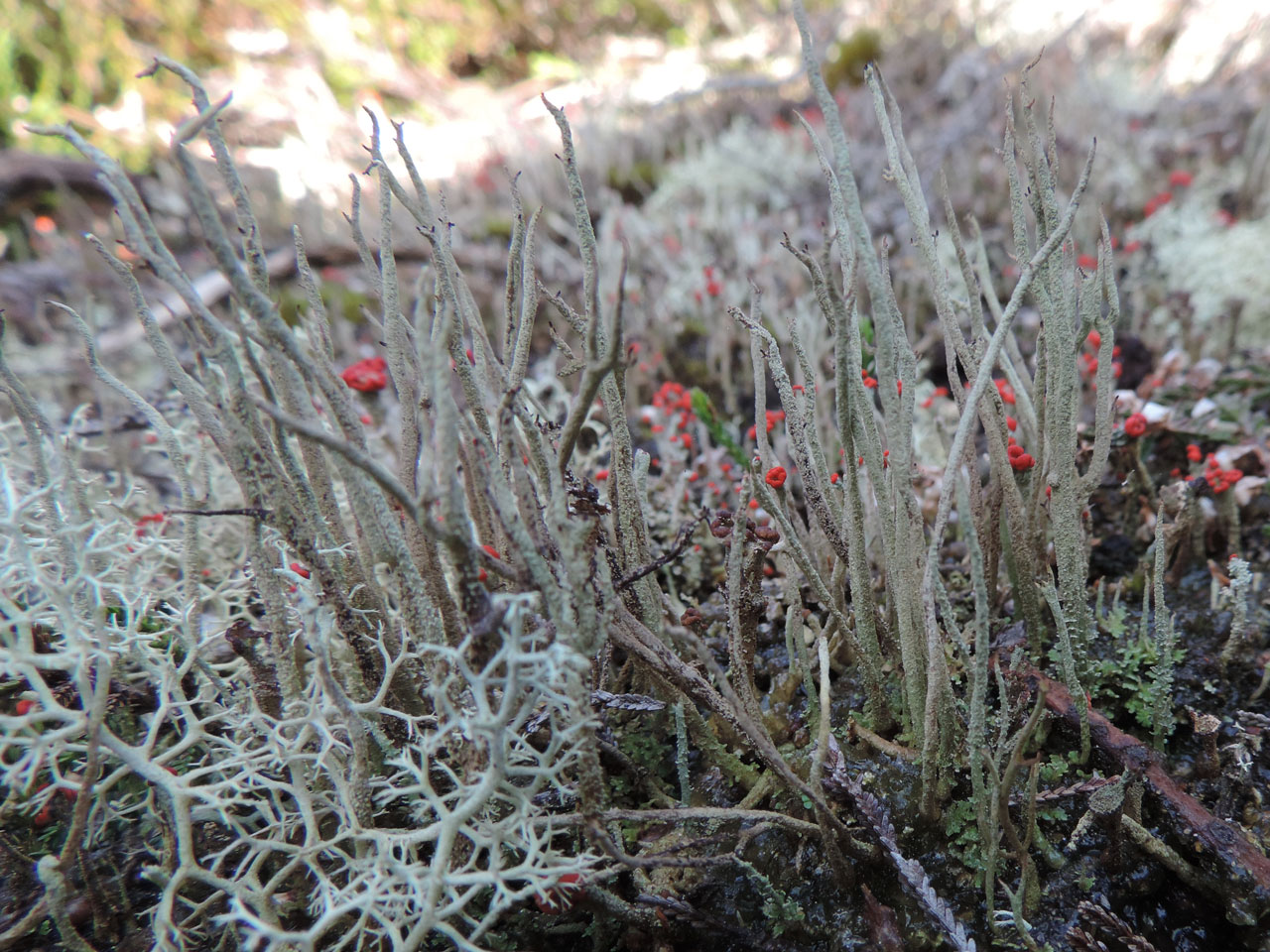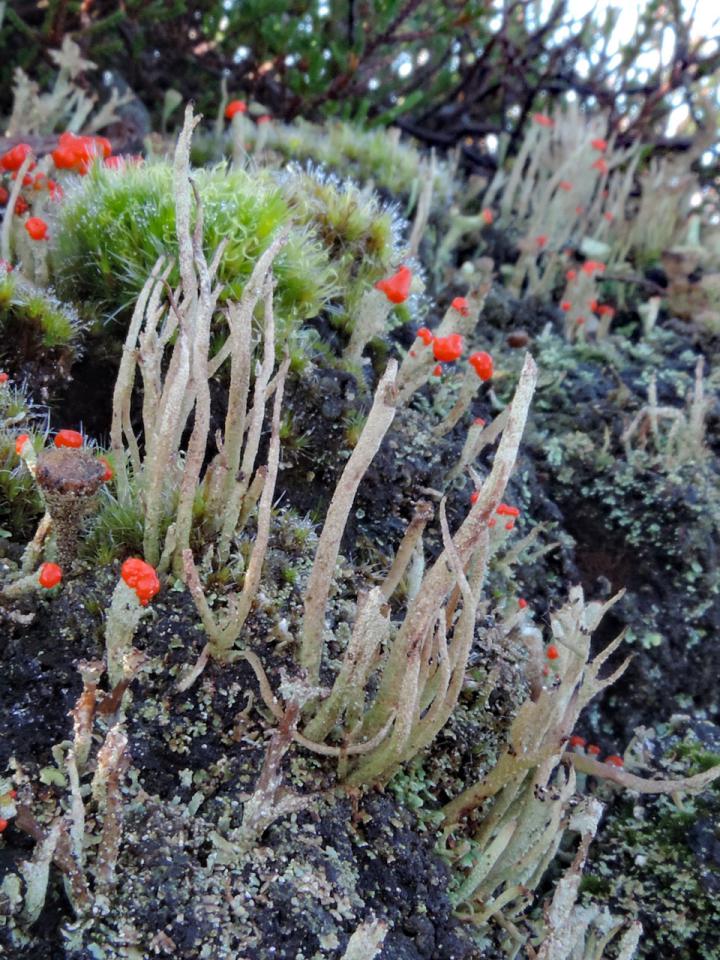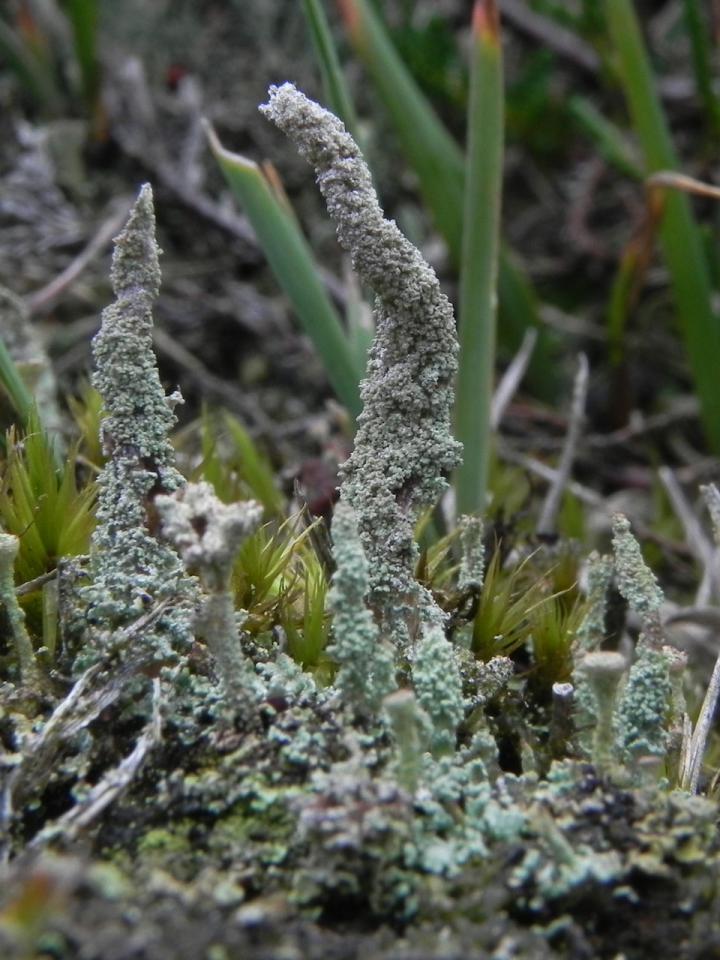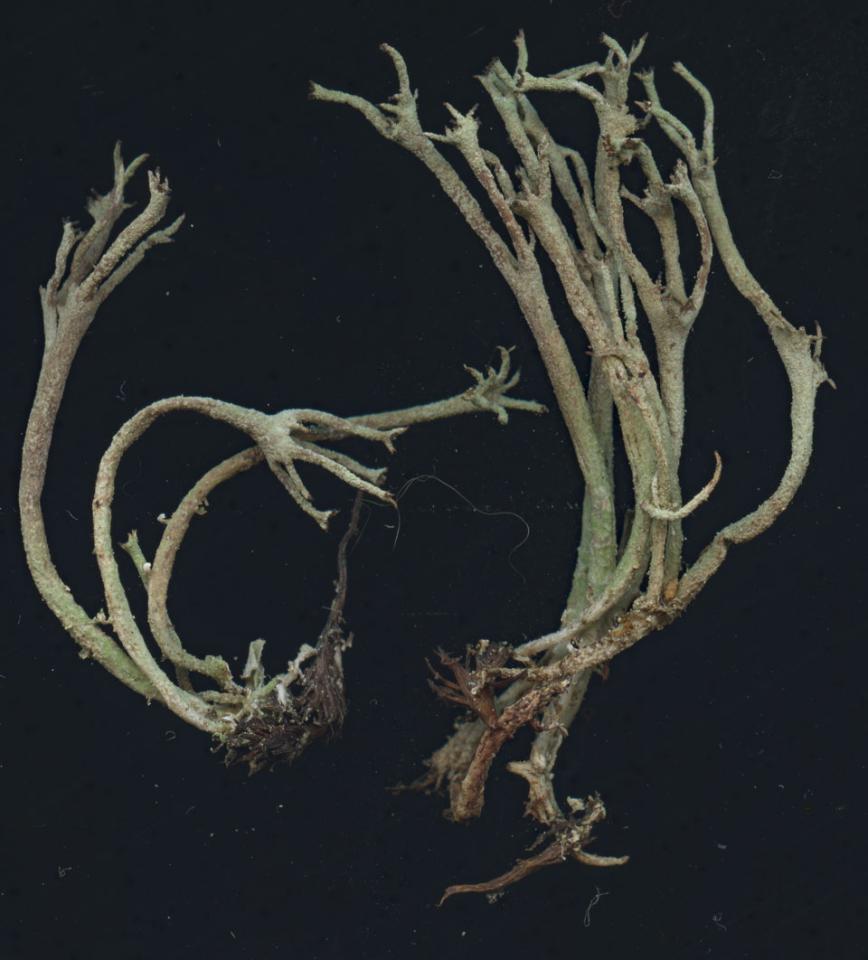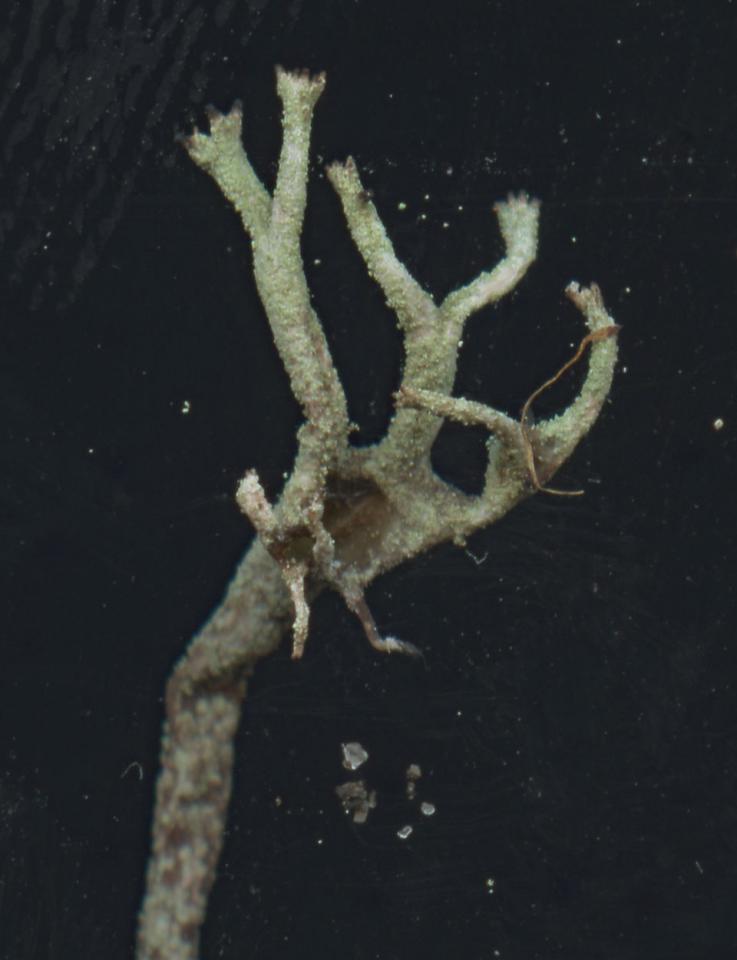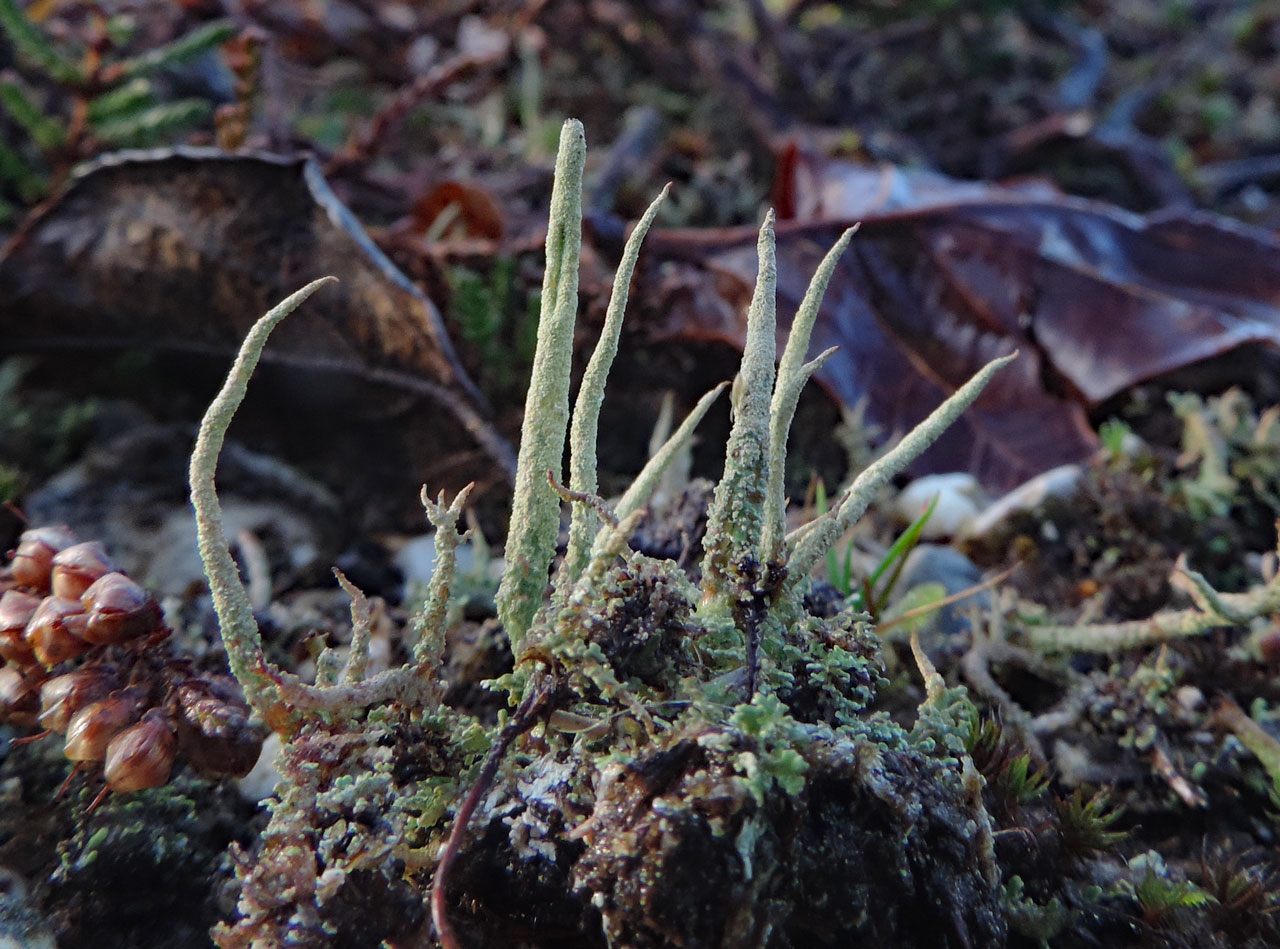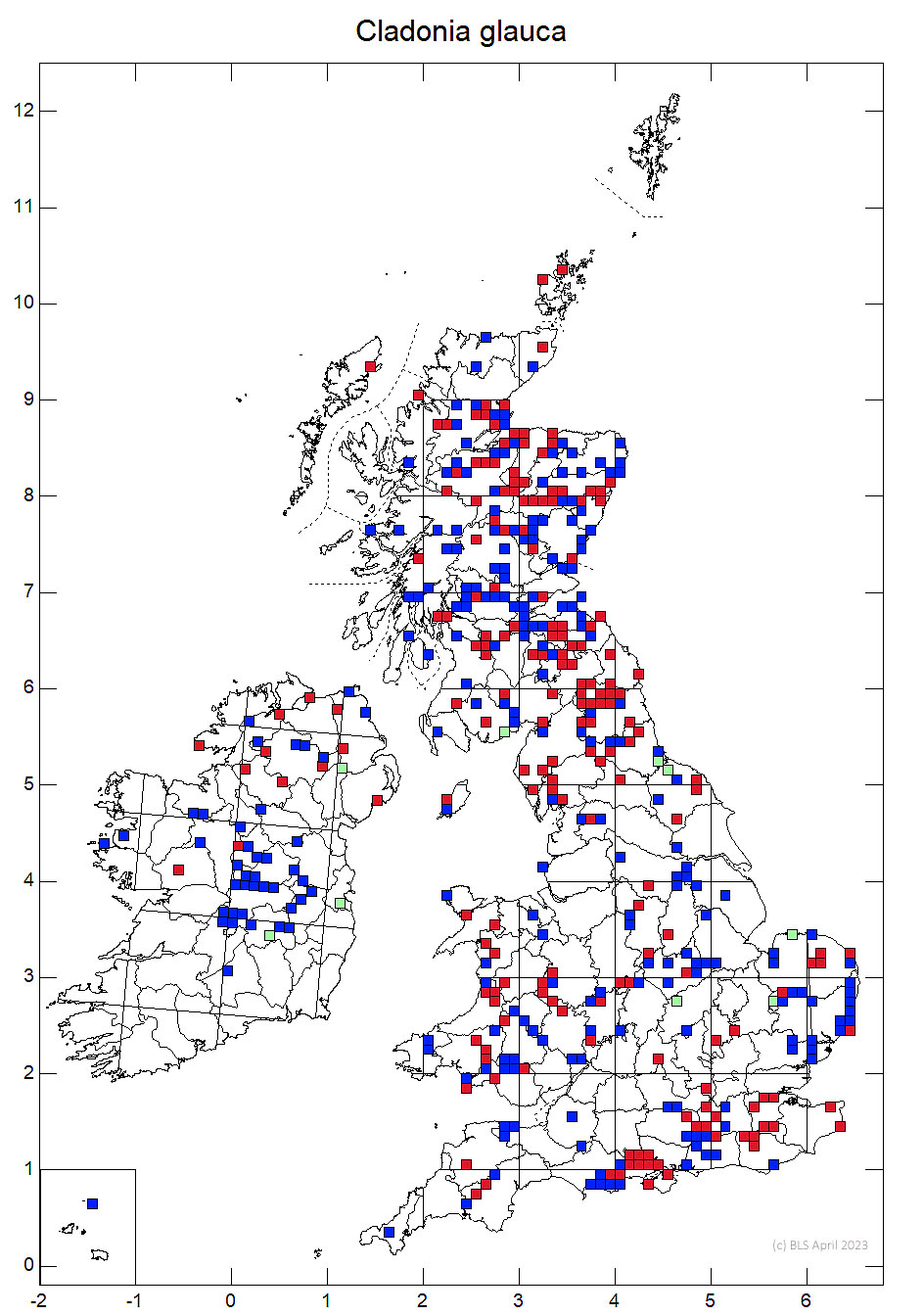Cladonia glauca
A pale grey to brownish heathtail Cladonia with pointed apices or rarely narrow perforate cups. Typically densely squamulose or roughly granular in the lower part, densely and finely sorediate in the upper part. Most easily confirmed by the UV+ vivid white (squamatic acid) florescence from the soralia in the commonest chemo-type. There is a chemo-type which is K+ yellow Pd+ yellow, UV– (thamnolic acid), but this is rather very rare or, quite possibly, escapes detection. The podetia often have a single inconspicuous longitudinal slit-like fissure, but this is not as diagnostic as claimed in some sources, as Cladonia subulata can also have a similar slit. Widespread on dead wood and acid humus in heaths and moors, most frequent in eastern Scotland, but more restricted to higher quality habitats to the south.
Podetia 1–5 cm tall, pale grey to brownish with pointed apices, or with narrow perforate cup, mostly unbranched, or 2- to 3-branched towards the apices, often with a single inconspicuous longitudinal slit-like fissure ± midway along the main podetium (in branched specimens the axils may also be perforated), rarely with small proliferating cups, often densely squamulose in the lower part, densely and finely sorediate in the upper part, sometimes also with scattered squamules extending upwards from the base. Basal squamules small, often inconspicuous, ± elongate and incised, greyish green above, white below. Apothecia brown, very rare. Pycnidia brown, on apices of podetia, frequent. Thallus C–, K–, KC–, Pd–, medulla UV+ vivid white (squamatic acid) or K+ yellow Pd+ yellow/orange, UV– (thamnolic acid).
When sterile, Cladonia glauca may be confused with the red-fruited C. macilenta, which has no lateral furrow and is K+ yellow, UV+ pale blue. Potentially rare sterile K+ yellow, Pd+ yellow, UV– (thamnolic acid) containing C. glauca has been over looked as C. macilenta, the colour difference may help with C. glauca much browner than the yellowish grey C. macilenta.
C. subulata, when well-developed, has antler-like branching and is Pd+ red, UV– (fumarprotocetraric acid); claimed distinctions between the two species based on furrowing of the podetia seem to be unreliable, but the furrow in C. glauca is usually deeper.
Cladonia rei has a UV+ white (homosekikaic) medulla, but the sorelia do not fluoresce and the podetia is Pd + orange.
Robust specimens with small cups have been mistaken for Cladonia cenotea, but this is much stouter with wider better developed cups.
On old, rotting tree stumps and on humus and peat in heathlands and moorlands; widespread, but more restricted to higher quality habitats to the south.

Scattered throughout Britain and Ireland, apparently commoner in N. E England and E. Scotland.
Potentially somewhat threatened to the south by habitat loss and a decline in intensity of heathland management, but still common in the north.
Pino-Bodas, R., Sanderson, N., Cannon, P., Aptroot, A., Coppins, B., Orange, A. & Simkin, J. (2021). Lecanorales: Cladoniaceae, including the genera Cladonia, Pilophorus and Pycnothelia. Revisions of British and Irish Lichens 19: 1-45. Link
Text by Neil A Sanderson, based on Pino-Bodas et al (2021)
